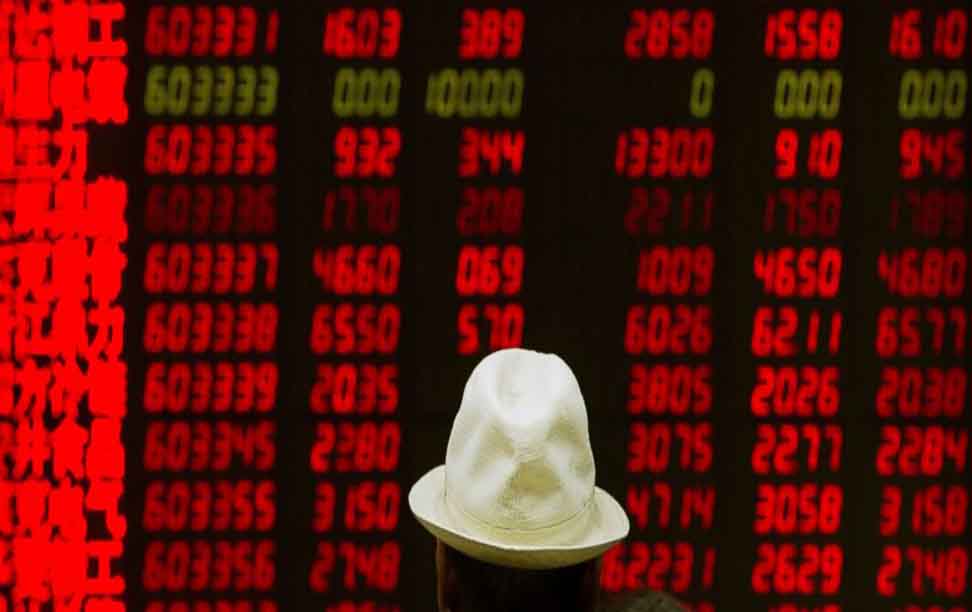Moody's Investors Service (“Moody's”) has today changed the outlook on Pakistan's rating to negative from stable and affirmed the B3 local and foreign currency long-term issuer and senior unsecured debt ratings.
The decision to change the outlook to negative is driven by heightened external vulnerability risk.
Foreign exchange reserves have fallen to low levels and, absent significant capital inflows, will not be replenished over the next 12-18 months. Low reserve adequacy threatens continued access to external financing at moderate costs, in turn potentially raising government liquidity risks.
The decision to affirm the B3 rating reflects Pakistan's robust growth potential, supported by ongoing improvements in energy supply and physical infrastructure, which are likely to raise economic competitiveness over time. These credit strengths balance Pakistan's fragile external payments position and very weak government debt affordability owing to low revenue generation capacity.
Concurrently, Moody's has affirmed the B3 foreign currency senior unsecured ratings for The Second Pakistan Int'l Sukuk Co. Ltd. and The Third Pakistan International Sukuk Co Ltd. The associated payment obligations are, in our view, direct obligations of the government of Pakistan.
Pakistan's Ba3 local currency bond and deposit ceilings remain unchanged. The B2 foreign currency bond ceiling and the Caa1 foreign currency deposit ceiling are also unchanged. The short-term foreign currency bond and deposit ceilings remain unchanged at Not-Prime.
Moody's expects Pakistan's external account to remain under significant pressure. The coverage by foreign exchange reserves of imports will likely fall further from already low levels, while coverage of external debt payments due will weaken from currently adequate levels. In turn, higher foreign currency borrowing needs, in combination with the low levels of foreign exchange buffers, risks weighing on the ability of the government to access external financing at moderate costs.
First, external vulnerability risks are related to Pakistan's sizeable current account deficit, which Moody's expect will only narrow slightly to around 4-4.3% of GDP over the next few years, after an expected 4.6% in fiscal 2018 (FY2018, fiscal year ending June 2018) and compared to an average deficit of around 1.5% between FY2014 and FY2016.
Further, continued growth in imports of goods — driven by demand for capital goods under the China-Pakistan Economic Corridor (CPEC) project, higher fuel prices and robust household consumption — will prevent a significant narrowing of the current account deficit. Although goods exports have picked up since the start of 2018, growing around 10-15% year-on-year in US dollar terms, they only amount to half the level of goods imports. While Moody's assumes continued strong growth in exports, this will not be enough to narrow the trade gap.
As a result, unless capital inflows increase significantly, Moody's does not expect official foreign exchange reserves to replenish from their current low levels. Stable foreign direct investment (FDI) inflows, in particular, have not kept pace with the increased outflows driven by trade. As of end-May 2018, official foreign exchange reserves were around $10 billion, down more than 40% from their October 2016 peak and sufficient to cover just two months of imports. Under Moody's baseline projection, the import cover of reserves will likely fall to around 1.7-1.8 months over the next fiscal year, below the adequacy level of three months generally recommended by the International Monetary Fund. Moody's expects the government's tax amnesty scheme, which expires in June 2018, to have a modest impact of around $2-3 billion in foreign exchange inflows.
Second, the coverage by foreign exchange reserves of external debt payments due is weakening, pointing to further external vulnerability risks. With a significant rise in equity inflows unlikely, Moody's expects Pakistan's external financing gap to be met by increased foreign currency borrowing, mainly by the government.
Pakistan's External Vulnerability Indicator, the ratio of external debt payments due over the next year plus total non-resident deposits over one year to foreign exchange reserves, will rise to over 120% in FY2019 and further in FY2020, from around 80-85% at the start of FY2018.
While policymakers have started to respond to the external pressures, the policy tools available are politically challenging and would likely have a negative economic impact. The authorities have so far allowed the Pakistani rupee to depreciate by a total of 15% against the US dollar since December 2017, raised policy rates by a total of 75 basis points, and imposed regulatory duties on imports of nonessential goods.
Moody's expects these measures to contribute to somewhat lower growth, at 5.2% on average over the next two fiscal years, from an expected 5.8% in FY2018, and higher inflation at 7.0% in FY2019, from around 4% in FY2018.
Further currency depreciation, higher policy rates, fiscal tightening, and/or higher regulatory duties would likely weigh further on growth and raise inflation above Moody's current projections.







